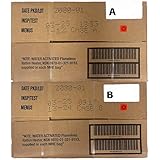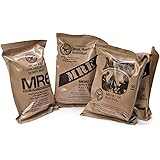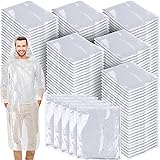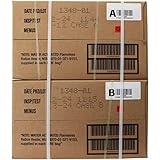Assessing Your Risks
Understanding Your Environment
One of the first things I always do when I think about emergency planning is take a good look around me. What are the risks associated with where I live? Are there natural disasters like floods or earthquakes? You’d be surprised at how much your environment shapes the potential medical emergencies you might face.
Next, I consider the people in my life. Do I have young kids, elderly family members, or someone with chronic health issues? Each of these factors can change the game when it comes to emergency planning. I always try to think like a planner and not just a person reacting to situations on the spot.
Finally, it helps tremendously to read up on local emergency history. What kinds of situations have impacted your community before? Understanding this can give you a solid foundation on which to build your emergency medical plan.
Preparing Your Medical Supplies
Creating a Comprehensive First Aid Kit
When it comes to emergencies, I find that having a well-stocked first aid kit can be a lifesaver. I started with the basics: bandages, antiseptic wipes, and gauze. But then I thought about potential situations, like allergic reactions or minor burns; so I added antihistamines and burn cream.
Keeping a first aid kit is just the beginning! Regularly checking its contents is crucial, too. I like to do this every few months to make sure everything is still usable, especially medications that have expiration dates. It’s a simple step that makes a huge difference.
Lastly, consider customizing your kit based on your specific needs. For example, if someone in your family has special health concerns, a few extra items might be necessary. Tailoring your kit not only shows foresight but makes you feel more prepared.
Establishing Emergency Contacts
Building Your Contact List
I’ve learned that having a solid list of emergency contacts is absolutely essential. This involves more than just jotting down names and numbers. I make sure to label who to contact for specific situations—like my neighbor for pet emergencies or a nearby friend for immediate help.
Additionally, sharing this list with family members can save crucial time during an emergency. I found that putting the list on the fridge, and even programming important numbers into my phone, helps keep everyone informed. Just the reassurance that you have quick access to the right people can reduce stress.
== > What if ... Get a FREE Subscription to PREPARE
Don’t forget to include your doctors or specialists! Having direct lines to medical professionals can be a game-changer if you find yourself needing quick advice in a bind.
Practicing Emergency Response Skills
Taking First Aid and CPR Classes
One of the best investments I made was taking a first aid and CPR class. The knowledge I gained made me feel empowered, like I could genuinely make a difference if something went wrong. You learn hands-on skills that can be applied in real-life scenarios.
Get Preparedness and Self-Reliance Tips. Subscribe Now!
But it doesn’t stop there! I also practiced these skills regularly. Whether it’s refreshing my memory on how to perform CPR with my family or role-playing different emergency scenarios, practice has improved my confidence tremendously.
Plus, engaging in these classes with others can foster a sense of community and shared responsibility. The discussions and participation in these classes really bring the seriousness of emergency preparedness to light.
Creating an Emergency Plan
Crafting Clear Guidelines for Everyone
Putting together an emergency plan has been a rewarding project. I like to start by mapping out what steps everyone in my household should take in various emergency scenarios, like medical crises or natural disasters. This way, the plan is clear, and there’s no second-guessing when the time comes to act!
Everyone must be on the same page, so I hold family meetings to discuss our plan. It’s important that everyone knows their specific roles, from who grabs the first aid kit to who contacts emergency services.
Most importantly, I revisit this plan regularly. Life changes—new babies, moving houses, you get the idea! Keeping our emergency plan relevant and practical is crucial in ensuring it remains effective.
FAQs
1. What should I include in my first aid kit?
Your first aid kit should at least contain bandages, antiseptic wipes, gauze, pain relievers, and any personal medications. You might also want to consider adding items specific to your family’s needs, like an EpiPen if anyone has severe allergies.
2. How often should I check my emergency supplies?
I recommend checking your emergency supplies every 3 months. This way, you can replace expired items and ensure everything remains stocked and ready to go when you need it.
3. Who should I include in my emergency contact list?
Your emergency contact list should include family members, neighbors, trusted friends, and medical professionals. It’s essential to have different contacts for various situations, allowing for quick and effective communication.
4. How can I make sure my family knows our emergency plan?
Hold regular family meetings where you can discuss the emergency plan. Practicing scenarios and assigning roles can help your family remember what to do when it truly counts.
5. Should I take a first aid course?
Absolutely! Taking a first aid course not only equips you with critical skills, but it also builds your confidence in handling emergencies. Plus, it’s a fantastic way to connect with your community.






